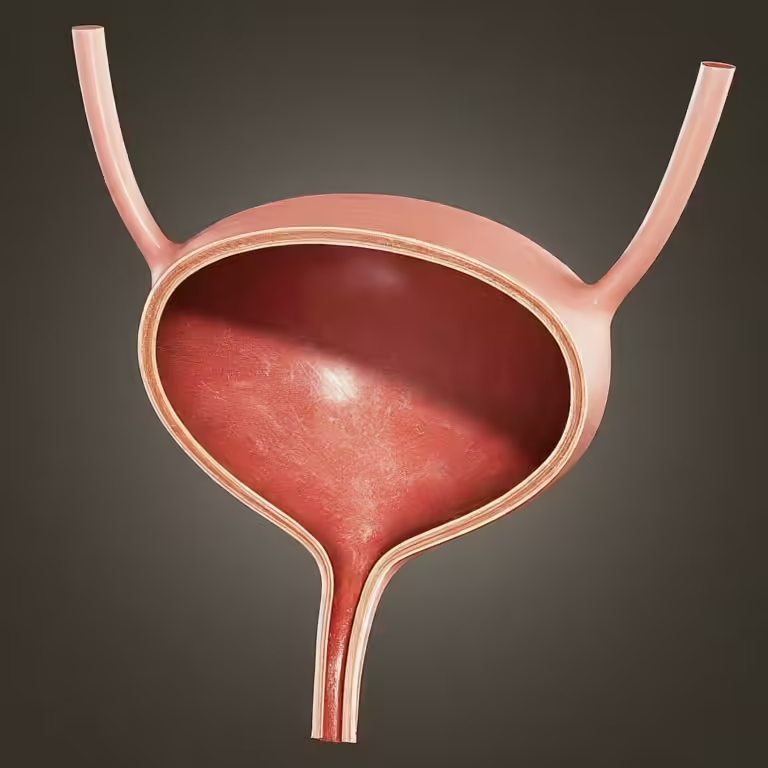Medically reviewed by Dr Itender Pal Singh
Bladder infections, commonly referred to as cystitis, are among the most prevalent forms of Urinary Tract Infection (UTI). These infections primarily target the bladder, though they can impact other parts of the urinary system, including the urethra, ureters, and kidneys. Understanding the causes, symptoms, and treatments for bladder infections is crucial for maintaining good urinary health.
What is a Bladder Infection?
A bladder infection occurs when harmful bacteria enter the bladder, leading to irritation and inflammation. While bladder infections can affect anyone, they are particularly common among individuals assigned female at birth. This is due to the anatomical structure, where the shorter urethra in females provides a quicker route for bacteria to reach the bladder.
Symptoms of a Bladder Infection
Recognizing the symptoms of a bladder infection is essential for early intervention. The most common symptoms include:
- Burning Sensation During Urination: This discomfort is often the first sign of a bladder infection.
- Frequent Urination: Individuals may feel an intense urge to urinate, even if little urine is passed.
- Cloudy or Bloody Urine: The urine may appear cloudy, or in some cases, contain blood, accompanied by a strong odor.
- Pressure or Cramping: A sensation of pressure or cramping in the groin or lower abdomen is common.
When the Infection Spreads to the Kidneys
If left untreated, a bladder infection can spread to one or both kidneys, leading to a more severe condition known as pyelonephritis. Symptoms of a kidney infection include:
- Fever and Chills: Often accompanied by shaking.
- Lower Back Pain: Pain may also be felt in the side or the groin.
- Nausea and Vomiting: These symptoms often indicate a more severe infection.
- Cloudy, Dark, or Bloody Urine: The urine may have an unusually foul smell.
Bladder Infection Symptoms in Children
Children may also experience bladder infections, though their symptoms can differ. A fever is the most common sign, but it is important to be vigilant if a child appears unusually lethargic, irritable, or has a poor appetite.
What Causes Bladder Infections?
Bladder infections are caused by the invasion of bacteria into the bladder. The urinary system typically works to remove bacteria through urination. However, when the body’s defenses are compromised, bacteria can multiply in the bladder, leading to an infection.
Risk Factors for Bladder Infections
Several factors can increase the risk of developing a bladder infection:
- Sexual Activity: Sexual intercourse can introduce bacteria into the urinary tract.
- Previous UTIs: Individuals who have had UTIs in the past are more likely to experience recurrent infections.
- Anatomical Differences: Females have a shorter urethra, making it easier for bacteria to reach the bladder.
- Health Conditions: Certain conditions, such as diabetes or a weakened immune system, can increase the risk of infections.
Diagnosis of Bladder Infections
If you suspect a bladder infection, it’s important to seek medical attention for a proper diagnosis. Common diagnostic tests include:
- Urinalysis: This test checks for the presence of bacteria and white blood cells in the urine.
- Urine Culture: In cases of recurrent infections, a urine culture may be performed to identify the specific bacteria causing the infection.
- Cystoscopy: For individuals with frequent infections, a cystoscopy may be recommended to examine the bladder and urethra for abnormalities.
- Urodynamic Testing: This may be used to assess how well the bladder stores and empties urine, especially in cases of repeated infections.
Treatment for Bladder Infections
The primary treatment for bladder infections is the use of antibiotics to eliminate the bacteria. The choice of antibiotic depends on the type of bacteria and the patient’s medical history. Typically, symptoms improve within 24 to 48 hours of starting treatment. However, it’s crucial to complete the entire course of antibiotics as prescribed to ensure the infection is fully eradicated.
Preventing Bladder Infections
Preventing bladder infections involves adopting healthy habits:
- Hydration: Drinking plenty of fluids helps flush bacteria out of the urinary system.
- Hygiene Practices: Wipe from front to back after using the toilet to prevent bacteria from the anal region from spreading to the urethra.
- Urinate Regularly: Don’t hold urine for long periods, as this can encourage bacterial growth.
- Post-Sex Urination: Urinating after sexual intercourse can help clear bacteria from the urethra.
- Avoid Irritants: Steer clear of feminine hygiene sprays and douches, which can irritate the bladder and urethra.
Complications from Untreated Bladder Infections
If a bladder infection is not promptly treated, it can lead to serious complications, such as:
- Kidney Infections: As mentioned, untreated bladder infections can spread to the kidneys, leading to more severe health issues.
- Blood Poisoning (Sepsis): In rare cases, a kidney infection can cause bacteria to enter the bloodstream, leading to sepsis, a potentially life-threatening condition.
- Permanent Kidney Damage: Repeated or severe kidney infections can result in permanent damage to the kidneys.
Living with Bladder Infections
For most people, a bladder infection is a temporary inconvenience that is easily treated with antibiotics. However, for those who experience recurrent infections, it may be necessary to take preventive measures. This could include taking a low-dose antibiotic regularly or after sexual activity.
Bladder infections are a common but manageable condition. By recognizing the symptoms early, seeking prompt treatment, and adopting preventive measures, you can significantly reduce the risk of complications. If you experience frequent bladder infections, consult with your healthcare provider to explore options for preventing future occurrences. Maintaining good urinary health is essential for overall well-being, so don’t hesitate to take action if you suspect a bladder infection.
Sources–
Harrison manual of internal medicine
MedlinePlus- Urinary Tract Infection in adults.
Centers for Disease Control and Prevention. Urinary Tract Infection.
National Institute of Diabetes and Digestive and Kidney Diseases (NIDDK). Treatment of bladder infection in adults.
To know more about liver in details, click here




Pingback: Vaccine-Derived Polio Case in India's Meghalaya: What It Means for India ? WHO official investigating. - Healing Doctor
Pingback: Diabetes Mellitus - Know Types, Symptoms, 3 steps of Prevention and proven Treatment - Healing Doctor